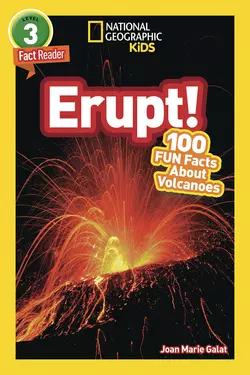National Geographic Kids Readers: Erupt!

Joan Galat и National Geographic
Тип: электронная книга
Жанр: Детская проза
Язык: на английском языке
Стоимость: 308.22 ₽
Статус: В продаже
Издательство: HarperCollins
Дата публикации: 16.04.2024
Отзывы: Пока нет Добавить отзыв
О книге: Kids will burst with excitement as they learn all about the science and wonder of volcanoes in this new National Geographic Kids Reader.The Level 3 text provides accessible, yet wide-ranging information for fluent readers. Plus, the book includes 100 fun facts for quick and quirky information on all kinds of volcanoes, all around the world–and even some that are out of this world! The Facts Readers series bridges the gap between short, digestible knowledge nuggets and informative sustained reading.